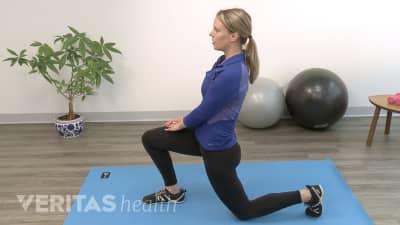Common treatment for snapping hip syndrome varies depending upon the origin of the snapping hip. When it’s the first type, which is outside of the joint, and it’s coming from a tendon that is snapping over the outside of the leg, normally, treatment for this is just to strengthen the surrounding muscles, including your core, the hip flexor muscles, the hip extensor muscles, the abductor muscles that allow your leg to move away from your body, and the hip adductor muscles. We also check the biomechanics and this is mainly through physical therapy to makes sure you’re balanced on both sides because often snapping hip can present unilaterally (only on one side).
Treatment for snapping hip syndrome that is coming from the inside of the leg and/or associated with the iliopsoas tendon being irritated underneath requires a little bit more in depth treatment to see if that iliopsoas tendon is involved. Normally, this type of snapping hip is painful, reflecting irritation of the underlying iliopsoas tendon.
For iliopsoas tendinitis, treatment is also to do good physical therapy that focuses on stretching and strengthening the muscles around the hip joint. For iliopsoas tendinitis, we also now have image guided injections, where we can put a small amount of steroid, and a small around of lidocaine (the steroid is the anti-inflammatory and the lidocaine is the anesthetic) around the tendon where it’s irritated, around the area that is inflamed to calm down the inflammation around the irritated iliopsoas tendon. The injection in combination with physical therapy typically is sufficient to completely treat cases of snapping hip syndrome that are coming from iliopsoas tendinitis.
Snapping hip syndrome that is coming from intraarticular joint pathology, and often this is coming from a hip labral tear, is treated by addressing the labral tear. To first see whether there is a labral tear, that can be diagnosed on MRI to localize where the actual tear in the labrum is. The other thing that can be done is a MRI with an arthrogram, where you inject a small amount of anesthetic into the joint to see if that helps with the symptoms of the labrum.
In addition to seeing what the actual anatomy is, this can also be therapeutic for the labral tear. Treating the labral tear typically involves physical therapy that decreases the pressure that is on the hip joint, as well as modifying any of the person’s activities. For recalcitrant cases where physical therapy is not helping sufficiently, where the injections haven’t helped for a long enough period of time, and if the tear is severe enough, then surgery is considered.
Recommended for You








